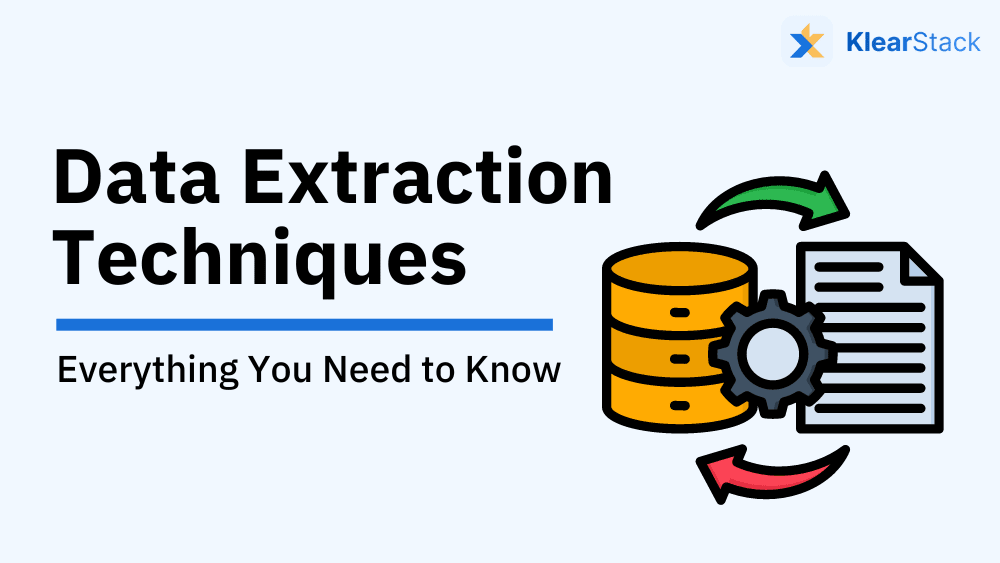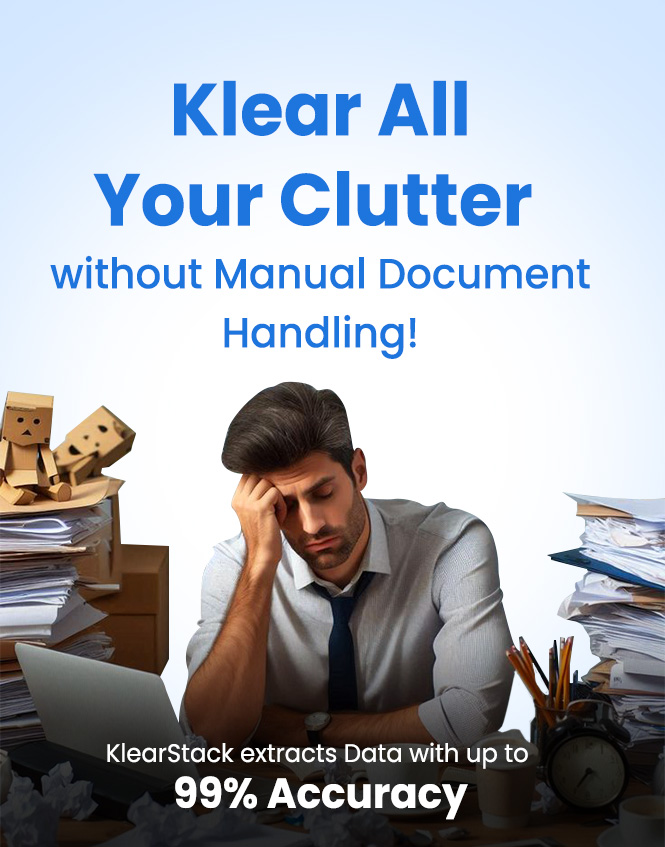Data extraction can be a nightmare if you don’t have the right tools by your side. The data around you is unstructured, has variety, and is in large volumes, affecting the way you collect it from various sources.
As per IDC, global data creation will grow at an annual growth rate of 23% over the period 2021-2025. The market intelligence provider also stressed the amount of new data being created and captured by organizations.
Therefore, if you do not apply the right data extraction techniques & methods, you will not only miss out on the opportunities the new data would bring but also end up wasting your time, money, and resources on less effective strategies.
So read this step-by-step guide on different data extraction techniques to make it profitable for your business.
What are the various techniques for data extraction?
Depending on the data source, there are 4 different types of data extraction techniques and methods.

They include:
- Association
- Classification
- Clustering
- Regression
Let’s check them out in detail.
#1. Association
It is a data extraction technique that depends on relationships between different entities in a dataset. Simply put, when you have a large database you analyze its different elements — primarily recurring ones — and find dependencies between them.
It’s about analyzing the occurrence of one entity based on the occurrence of another one. When it comes to data extraction, the large database becomes a large chunk of text that can be documents like invoices and receipts, social media comments, or images.
So association analysis helps find relationships between various text elements, which in turn, helps create patterns in data. As a result, it becomes easy to understand the context of the data, and therefore, extract it accurately.
The technique uses support and confidence parameters to find frequently occurring elements in the text and identify relationships within them.
#2. Classification
Of all data extraction techniques, classification is regarded as one of the easiest and the most efficient processes. In classification, you identify different data classes and create models for them. Based on these models, you categorize all text elements into their respective classes.
That means you create a learning model for every entity of data you want to extract from the text.
The process goes like this: you create predictive algorithms to detect different entities from the chunk of text and then apply different class levels to develop classification rules. When you have the right set of rules, prediction algorithms work to classify different data elements based on their corresponding classes.
#3. Clustering
As the name suggests, clustering involves the segregation of similar or different data elements into clusters. Clustering occurs based on the characteristics of data elements. The similarities and differences in characteristics are studied for the same document.
Being one of the important data extraction techniques, clustering is effectively used as a prerequisite for other data extraction algorithms to function properly.
Clustering is primarily helpful in data extraction from images where there’s a lot of room to find differences and similarities in the given image.
#4. Regression
A dataset is made of certain variables. When you deduce a relationship between those variables and identify the dependent and independent ones, the analysis is called regression analysis.
Regression is a tool to identify relationships between different data units and when you apply the concept to data extraction, it’s all about finding dependent and independent elements in the text/document.
In data extraction, regression is implemented based on continuous values — a set of numerical values — that define the variables of the entities associated with the data.
The different data extraction techniques you read above classify the extraction process into various types. Let’s see them in detail.
What Types of Data Extraction are there?
There are 4 primary types of data extraction that we know about.
The way data is captured from documents has evolved to date, and hence, we have come a long way from manual to AI-based data extraction. Read on to know more about them.
1. Manual data extraction
Manual data extraction — as the name suggests — involves manually collecting and storing data from different documents in a single place like spreadsheets.
For example, in invoice data extraction, the manual process would involve the accounts payable department scanning through the invoices and manually entering the required fields in a spreadsheet. The process is tedious and time-consuming, eating up employee productivity and resources in a mundane task.
We calculated the cost of processing an invoice manually, and it came out to be $12. Now if you multiply it by the number of invoices you process every month, you’ll get the monthly expense you’ll incur.
2. Traditional OCR-based data extraction
OCRs scan documents into PDFs and then with the help of an in-built invoice reader extract data into internal systems. If we take the same example of invoice data extraction, the manual collection and storing of data is done by OCR.
However, the system is still inefficient because traditional OCRs don’t understand the context of the data they are capturing. Consequently, this resulted in cluttered data, stored in spreadsheets which the AP department would check, validate, and approve before processing.
Human intervention was still in the picture and even more because sometimes the data captured by OCRs just wouldn’t make sense. So the employees have to re-enter the details again.
3. Template-based data extraction
Template-based data extraction came into the picture when OCRs failed to extract data from a variety of document formats. The lack of consistent structure forced innovators to create templates for every document they received.
The problem arises when even documents of the same type come in different formats. That means invoices from suppliers didn’t share the same format. You’d have to create a template for all those suppliers’ invoices for your OCR software to extract data accurately.
Now when you feed another document that did not follow the template will end up in clutter because the field positions of the document won’t match with the field positions of the template. The AP department will resume its task of manually rectifying the mistakes.
4. AI-enabled data extraction
AI-enabled data extraction is the smartest and the most efficient ones that improves employee productivity, reduces the time, money, and resources you invest, and automates the entire process with little to no human intervention.
AI-based data extraction combines template-less OCR with intelligent data interpretation to understand the context of data before extracting it accurately. Apart from this, the solution also gives you detailed insights into your document after it extracts data from it.
Machine learning and natural language processing (NLP) are the two main technologies behind AI-enabled data extraction.

Types of Data Extraction in ETL
Data extraction is the first step of the ETL process — Extract Transform Load. Therefore, the data you capture must be contextually correct and accurate. Let’s see the different data extraction techniques in ETL.
1. Logical Extraction
It has two different options: full extraction and incremental extraction.
a. Full extraction
In this technique, the data is completely extracted from the document at once without bothering about the modifications made to it since the last time it was processed. It converts all the data formats into digitized text which is then compared with the previously extracted to track changes.
b. Incremental extraction
In incremental extraction, you track the changes of the document while extracting data from it every time it gets updated. As a result, the data has to be extracted only from the changes done and then fed into the already extracted digitized file.
2. Physical extraction
It also has two different options — online and offline extraction.
a. Online extraction
In online extraction, the data is directly transferred from the document to the internal system for storage. The data extraction software has access to the document which then extracts and transfers data to the desired system.
b. Offline extraction
Here, the data is not transferred directly from the primary document. Instead, it is extracted from a different document that’s outside the extraction software.
Data Extraction Techniques & Methods Used by Enterprises For Bulk Processing
When it comes to enterprise data processing, not all of the data extraction techniques discussed above will fit the role. The reason is — enterprises deal with a massive amount of data every day. It’s not possible to apply manual or template-based techniques to capture data.
So let’s see the data extraction techniques relevant for enterprise data processing.
Intelligent OCR-based data extraction
Intelligent OCRs are all about smart document scanners and data extraction tools that understand the context of data and then extract it into an organized structure. They use three primary technologies to function:
a. Machine learning
The data extraction tools are given a set of training data to learn and adapt. The data includes several action and outcome sequences that allow the software to train itself on different possibilities. When actual documents are fed to the system for data extraction, it uses the training data to capture text elements. With every interaction, the tool gets better.
b. NLP (natural language processing)
NLP helps the data extraction software understand the language of documents. The data in these documents is mostly natural language and it becomes a bit difficult for the machine to understand it. But with NLP, the software can capture the right key-value pairs by comprehending the real meaning behind each of them.
Automated and enterprise-ready AI-driven Data Extraction
If you had an automated data extraction software that would efficiently and accurately extract data from the documents, by understanding context and field placement, would you buy it?
KlearStack is one such software — an AI-enabled, intelligent OCR-based data extraction software that blends the capabilities of AI, ML, and NLP to scan your business documents and capture data from them. It is a template-less and end-to-end automated solution that improves core business operations and business and employee productivity.
Besides, KlearStack also helps organizations save on their time, money, and resources.
Register for free demo






